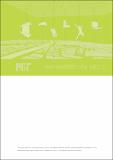| dc.contributor.author | Pei, Tao | |
| dc.contributor.author | Sobolevsky, Stanislav | |
| dc.contributor.author | Ratti, Carlo | |
| dc.contributor.author | Shaw, Shih-Lung | |
| dc.contributor.author | Li, Ting | |
| dc.contributor.author | Zhou, Chenghu | |
| dc.date.accessioned | 2016-03-09T17:23:59Z | |
| dc.date.available | 2016-03-09T17:23:59Z | |
| dc.date.issued | 2014-05 | |
| dc.date.submitted | 2013-10 | |
| dc.identifier.issn | 1365-8816 | |
| dc.identifier.issn | 1362-3087 | |
| dc.identifier.uri | http://hdl.handle.net/1721.1/101646 | |
| dc.description.abstract | Land-use classification is essential for urban planning. Urban land-use types can be differentiated either by their physical characteristics (such as reflectivity and texture) or social functions. Remote sensing techniques have been recognized as a vital method for urban land-use classification because of their ability to capture the physical characteristics of land use. Although significant progress has been achieved in remote sensing methods designed for urban land-use classification, most techniques focus on physical characteristics, whereas knowledge of social functions is not adequately used. Owing to the wide usage of mobile phones, the activities of residents, which can be retrieved from the mobile phone data, can be determined in order to indicate the social function of land use. This could bring about the opportunity to derive land-use information from mobile phone data. To verify the application of this new data source to urban land-use classification, we first construct a vector of aggregated mobile phone data to characterize land-use types. This vector is composed of two aspects: the normalized hourly call volume and the total call volume. A semi-supervised fuzzy c-means clustering approach is then applied to infer the land-use types. The method is validated using mobile phone data collected in Singapore. Land use is determined with a detection rate of 58.03%. An analysis of the land-use classification results shows that the detection rate decreases as the heterogeneity of land use increases, and increases as the density of cell phone towers increases. | en_US |
| dc.description.sponsorship | National Natural Science Foundation (China) (Project 41171345) | en_US |
| dc.description.sponsorship | National Natural Science Foundation (China) (Project 41231171) | en_US |
| dc.description.sponsorship | China. Ministry of Science and Technology. National Key Technologies R&D Program (2012AA12A403) | en_US |
| dc.description.sponsorship | Singapore-MIT Alliance for Research and Technology | en_US |
| dc.description.sponsorship | King Abdulaziz City of Science and Technology (Saudia Arabia). Center for Complex Engineering Systems | en_US |
| dc.description.sponsorship | National Science Foundation (U.S.) | en_US |
| dc.description.sponsorship | MIT-Portugal Program | en_US |
| dc.description.sponsorship | AT&T Foundation | en_US |
| dc.description.sponsorship | Audi Volkswagen | en_US |
| dc.description.sponsorship | Banco Bilbao Vizcaya Argentaria | en_US |
| dc.description.sponsorship | Coca-Cola Company | en_US |
| dc.description.sponsorship | Ericsson (Firm) | en_US |
| dc.description.sponsorship | Expo 2015 | en_US |
| dc.description.sponsorship | Ferrovial (Firm) | en_US |
| dc.description.sponsorship | General Electric Company | en_US |
| dc.description.sponsorship | SENSEable City Laboratory Consortium | en_US |
| dc.language.iso | en_US | |
| dc.publisher | Taylor & Francis | en_US |
| dc.relation.isversionof | http://dx.doi.org/10.1080/13658816.2014.913794 | en_US |
| dc.rights | Creative Commons Attribution-Noncommercial-Share Alike | en_US |
| dc.rights.uri | http://creativecommons.org/licenses/by-nc-sa/4.0/ | en_US |
| dc.source | MIT web domain | en_US |
| dc.title | A new insight into land use classification based on aggregated mobile phone data | en_US |
| dc.type | Article | en_US |
| dc.identifier.citation | Pei, Tao, Stanislav Sobolevsky, Carlo Ratti, Shih-Lung Shaw, Ting Li, and Chenghu Zhou. “A New Insight into Land Use Classification Based on Aggregated Mobile Phone Data.” International Journal of Geographical Information Science 28, no. 9 (May 8, 2014): 1988–2007. | en_US |
| dc.contributor.department | Massachusetts Institute of Technology. Department of Urban Studies and Planning | en_US |
| dc.contributor.department | Massachusetts Institute of Technology. School of Architecture and Planning | en_US |
| dc.contributor.department | Massachusetts Institute of Technology. SENSEable City Laboratory | en_US |
| dc.contributor.mitauthor | Pei, Tao | en_US |
| dc.contributor.mitauthor | Sobolevsky, Stanislav | en_US |
| dc.contributor.mitauthor | Ratti, Carlo | en_US |
| dc.relation.journal | International Journal of Geographical Information Science | en_US |
| dc.eprint.version | Original manuscript | en_US |
| dc.type.uri | http://purl.org/eprint/type/JournalArticle | en_US |
| eprint.status | http://purl.org/eprint/status/NonPeerReviewed | en_US |
| dspace.orderedauthors | Pei, Tao; Sobolevsky, Stanislav; Ratti, Carlo; Shaw, Shih-Lung; Li, Ting; Zhou, Chenghu | en_US |
| dc.identifier.orcid | https://orcid.org/0000-0003-2026-5631 | |
| dc.identifier.orcid | https://orcid.org/0000-0001-6281-0656 | |
| mit.license | OPEN_ACCESS_POLICY | en_US |
| mit.metadata.status | Complete | |
